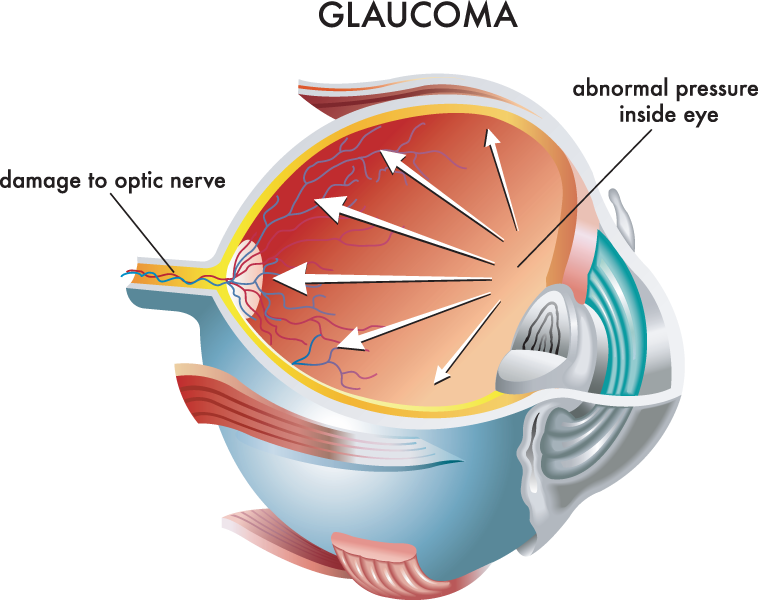Glaucoma
What is Glaucoma?
Glaucoma is a significant eye disease characterized by damage to the optic nerve, which is responsible for transmitting visual information to the brain. It has a growing impact on the American population, with over 3 million individuals currently affected, and an additional 200,000 being diagnosed each year. Among older adults, glaucoma is the leading cause of blindness. This condition typically develops due to the accumulation of fluid in the front of the eye, resulting in increased eye pressure and subsequent damage to the optic nerve.

Glaucoma can affect anyone.
But some factors that can increase a person’s risk of glaucoma include:
- Increased Age
- African American ethnicity
- High Blood Pressure
- Diabetes
- Family History
- Nearsightedness
- Long Term Steroid Therapy
- Injury to the Eye
There are two primary types of glaucoma:
- Primary Open-Angle Glaucoma: This is the most common form of glaucoma. It progresses slowly and often goes unnoticed until vision problems become evident. As a result, many individuals are unaware they have the condition until it reaches an advanced stage.
- Angle-Closure Glaucoma: Angle-closure glaucoma is less common but more urgent in nature. It manifests with rapid and severe symptoms, affecting vision from the moment it begins. Immediate medical attention is essential when angle-closure glaucoma is suspected.
How is Glaucoma Treated?
The treatment approach for glaucoma depends on individual circumstances and the stage of the disease. During an eye examination, healthcare professionals assess the progression of the disease and the overall health of the eyes to determine the most suitable treatment option. These treatments can include prescription eye drops to reduce intraocular pressure, laser surgery, trabeculectomy, stent implantation, iridotomy, or cyclophotocoagulation. The primary objective of these interventions is to lower eye pressure and prevent further damage to the optic nerve.
It’s important to note that glaucoma is a global issue, and it is the leading cause of blindness worldwide. To safeguard your vision and overall eye health, it is recommended to schedule a consultation with one of our eye doctors for a comprehensive assessment and, if necessary, initiation of the appropriate glaucoma management plan.
